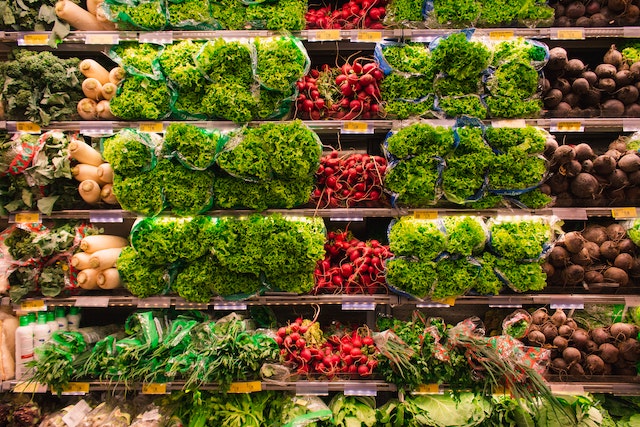
When it comes to preparing for the apocalypse - having a good supply of food in the ground is of utmost priority. Without food that can be harvested when you need it and where you need it - you aren’t prepared for diddly squat.
Too often people focus all their time and attention on annual crops which can be finicky to grow, require constant irrigation and need to be replanted every year. Most of these crops are from a different climatic region and are simply not suited to East-Coast Sub-Tropical Australia.
To not only survive - but thrive - you need crops that will stand the test of time and keep growing even when you forget about them. You also need foods that will fill you up and feed the extended family.
Warrigal Greens åare a great perennial and native survival food - but it certainly won't be fun ONLY eating leafy greens all day every day if you can’t get basic supplies from the shops anymore.
The following 5 Must-Have Survival Crops for Subtropical Gardens have been selected for their superior performance under STUN (Sheer Total Utter Neglect) growing methods. They are the lazy (smart) gardeners' trusted allies in creating abundant edible landscapes!
1. Queensland Arrowroot (Canna Edulis)
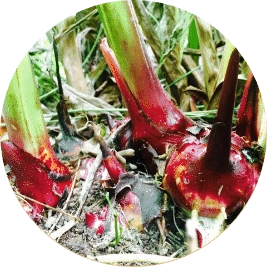
Originating from the Andean region in South America, it is commercially cultivated in Australia for the production of arrowroot starch and flour.
There are actually about ten varieties of canna and only one is the ‘true’ arrowroot. However, which one that is, is a highly debated subject! Rest assured all are edible.
When finding some for your garden you want the varieties that have big bulbous starchy tubers which can be used rather like a potato.
(NOTE: beware of canna indica which has thin elongated tubers which are still edible - but much harder to process - and much more prolific in that it will take over the garden not only via the rhizomes but via the prolific seeds it produces!)
Canna can thrive in harsh conditions - has hardly any pests or diseases - grows in nearly any type of soil, is drought resistant, the leaves are edible (and the chickens love them) and make superior quality mulch for the garden. What’s not to love about this incredible plant!
To eat - simply dig up a tuber, peel off the outer layers and boil, bake or fry as desired! We’ve found that ‘double cooking’ them adds a whole new dimension to them!
To propagate - simply break off a tuber and replant wherever you want!
2. Cassava (Manihot esculenta)
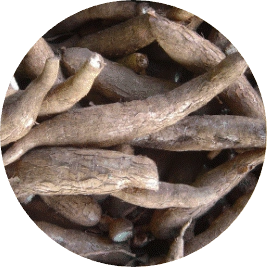
Cassava is a nutty-flavoured, starchy root vegetable. Native to South America, it’s a major source of calories and carbs for people in many countries.
It’s grown in tropical regions around the world because of its ability to withstand difficult growing conditions. In fact, it’s one of the most drought-tolerant crops.
The most commonly consumed part of the cassava plant is the root, which is incredibly versatile.
You can eat it whole, grated, or ground it into flour to use it in bread and crackers. The leaves are also edible.
Cassava root is used to produce tapioca, a type of starch. It is often used as a substitute in cooking and baking because it’s free of gluten, grains, and nuts.
It’s important to note that you must cook cassava root before eating it, as it can be poisonous if consumed raw. It also begins to oxidise rapidly after harvesting and is best consumed with 24hrs of harvesting. This is a large reason why you don’t see it in supermarkets.
To eat - dig up the tubers one by one as needed - or at the end of winter rip up the whole plant. Wash it as you would any other tuber. Slice it in half - and then with the knife peel off the outer layer of skin. This is an important step as it contains high levels of cyanogenic glucosides that are toxic. Then boil, fry or bake it as desired!
To propagate - simply cut a 30cm stick from a woody branch and stick it in the ground in spring. To get extra tuber growth - stick 2/3rds in the ground at a 45-degree angle so the tubers don’t bury themselves too deep.
3. Taro (Colocasia esculenta)
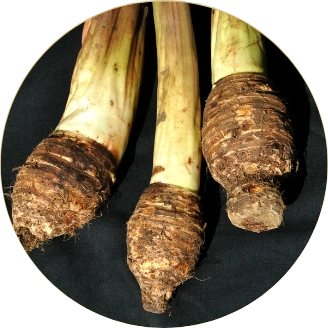
Taro is grown as a root crop throughout the humid tropics and is one of the most important food staples in the Pacific. It needs a long, frost-free growing season and plenty of water.
Taro has large, light green, heart-shaped leaves, and fleshy stems and grows up to 1.5 m in height. Taro is suitable for both wetland and dryland regions. It will grow well in partial shade, making it an excellent understorey plant.
The cultivar 'Bun-long' is one of the most popular and excellent eating taro with a creamy white, dense, starchy flesh with purple flecks, it grows well in sub-tropical zones. The leaves are green with a purplish centre spot, the stems become reddish as they mature.
To eat - simply remove the outter skin and then boil or fry it! Taro chips are especially delicious - but then so is taro mash!
To grow - simply save the top of the corm after harvesting and replant - alternatively you can break off the pups that continue to grow each year and replant.
4. Banana (Musa …)
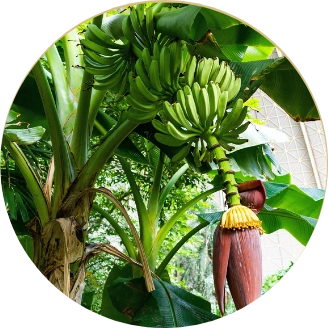
The banana plant is the largest herbaceous flowering plant - that’s right it’s technically a herb!
Bananas grow in a wide variety of soils, as long as the soil is at least 60 centimetres deep, has good drainage and is not compacted.
Bananas are pretty tough - but they are hungry plants - the more you feed them with compost, grass clippings, mulch, manure and any other organic material you can get you hands on the fatter they will grow! Oh and lots of water you can't give them too much water - but they need good drainage!
If you are tight on space - make sure you only get dwarf varieties. In fact, dwarfs are generally easier to manage and keep an eye on the bunches as they develop!
There are so many varieties of bananas you could spend a lifetime collecting them.
Whilst the birds and rodents do love to get into the ripening bananas before they are ready - you can protect your bunch quite easily with banana bags (another reason why dwarfs are so much easier to work with) - or alternatively - you can eat them green as well! Green bananas fried or boiled are an excellent addition to many a dish.
It is important to note here that bananas are heavily regulated by the various state authorities - the Australian Banana Growers Council Inc. has a good summary of info on what is legal.
To eat - do you really need instructions? Just remember you can eat green ones if you cook them! Banana chips anyone?
To propagate - after at least one year and your banana bush has got a solid foundation with plenty of pups coming up. Select a pup that is at least 30cm tall. To remove get a nice sharp long-handled shovel (better yet get a banana shovel with a super long blade) - and use your foot and shovel to slice the pup away from the main trunk. Dig down as deep as you can and as close to the main trunk as you can. From here, there are many different techniques you can use to plant (which we will save for another post) - but by far the most simple is to cut off all but the leader leaf - and replant where you want it.
5. Sweet Potato (Ipomoea batatas)
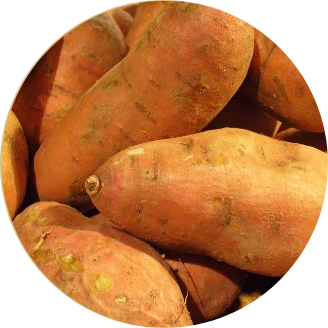
Sweet Potato is native to the tropical regions of the Americas and is one of those plants that once it gets going - you will never get rid of it - no matter how much you try.
The large starchy and sweet-tasting tubers are what is most commonly eaten (raw even!) - but the growing tips and leaves can also be eaten as leafy greens - best to blanch or boil them if eating a lot of it.
Of course, since it is so tasty - and it can be eaten raw - mice, bandicoots, bush turkeys and other burrowing wildlife also LOVE it. If your patch is big enough - you might not mind sharing - but if you don’t have a lot of space - then it is best to try and grow them in a controlled exclusive environment.
The orange sweet potato is the most common and the most prolific grower (probably why it's the most common) - but there are literally hundreds of varieties! Purple and white are also quite popular and tasty - but nowhere near as prolific.
To eat - simply dig it up, wash and eat. Yes you can eat it raw but most people prefer to steam, boil, bake or fry them!
To propagate - take bunches of the leafy runners - the best ones are where you can already see the nodes shooting down roots. Remove at least ¾ of the leaves and replant wherever you want.
So there you have it.
5 Must-Have Survival Foods for your Sub-Tropical Garden.
Getting even just one of each of these plants in your garden will mean that in a few years you won’t just have enough to feed yourself - but your entire family - and maybe even the wider community too! All for very little effort on your behalf.
